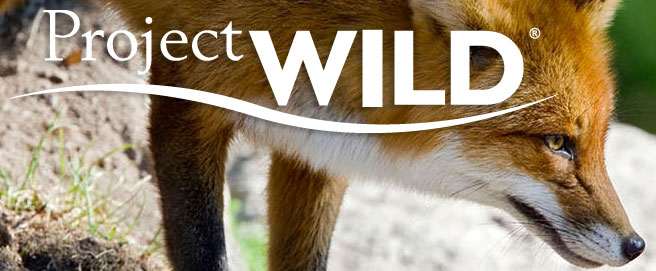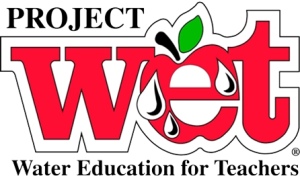My Project WILD Experience
 On Saturday, September 16, 2017 I attended a workshop called Project WILD. It was a hands on professional development workshop to teach educators how to integrate Project WILD curriculum into their classroom. Project WILD is all about environmental education and how we as teachers can create lessons about environmental education in many different ways. The lessons during the workshop were all hands on and engaging, and they had each and every one of us involved.
On Saturday, September 16, 2017 I attended a workshop called Project WILD. It was a hands on professional development workshop to teach educators how to integrate Project WILD curriculum into their classroom. Project WILD is all about environmental education and how we as teachers can create lessons about environmental education in many different ways. The lessons during the workshop were all hands on and engaging, and they had each and every one of us involved.During the workshop we went through eight activities that are possible ones you can use in your classroom ranging from Kindergarten to grade 12. Those eight lessons were: "Who am I?", "What Did Your Lunch Cost Wildlife?", "Interview with Your Spider", "Oh, Deer", "How Many Bers Live in the Forest?", "Bottleneck Genes", "Career Critters", and "Ethi - Reasoning". In addition to the eight lessons that we participated in, we also received an entire book of activities and lessons for grades K - 12 to use in our classroom.
I enjoyed the workshop overall, and I felt the lessons that we learned would be great to use in a classroom. Throughout this post, I am going to talk about some of my favorite activities that we did, even though I feel that all of them are beneficial for students.
The first activity that we did was called "Who Am I?" which is an icebreaker activity. The teacher would have necklaces made with different animals on them. Then a student would come up and put the necklace on without looking at the animal, but the class gets to see the animal. Next, the person wearing the necklace asks the class "yes" or "no" questions about the animal they are wearing to try and guess what the animal is. This activity was one of my favorite ones that we did. It was engaging and a great way to get students talking with each other and interacting with each other.
The next lesson that I enjoyed was "Interview with your Spider". Now, I am not a fan of spiders by any means. That was the only downfall to this activity! For this activity, we had to get information about a spider that we selected from "out of a hat". Once we had our information gathered and knew more about the spider we chose, we had to interview a partner about their spider. I liked this activity so much because it can be adapted to fit a lesson that you are teaching by selecting different animals, and using different sources for the students to gather information. During the workshop we only had pamphlets the instructor gave us, but in a classroom the students could use a computer to also find their information on top of books, pamphlets, etc. This activity is great because it is getting students to not only talk to each other, but they are building their research skills and their interviewing skills.
 "Oh, Deer" was another excellent activity that we did during the workshop. This activity got us up and moving outside. It taught us more about how resources and manmade things can affect a population, in this case deer. For us, we focused on the three main resources which are food, water and shelter. Some of us acted as deer, and others acted as the three different resources. The deer would pick what resource they wanted, and as we went along we saw how not only those three resources affect the population in either a good or bad way, but how things like hunters or cars can affect the population. It even showed us how the resources are affected. This activity is great to use in the classroom because it is a visual for students to see how a population can be affected. Also, this activity can be adapted and changed to fit the classroom. So, the animal population could be different, or there can be different predators to the population in place of a car or hunter.
"Oh, Deer" was another excellent activity that we did during the workshop. This activity got us up and moving outside. It taught us more about how resources and manmade things can affect a population, in this case deer. For us, we focused on the three main resources which are food, water and shelter. Some of us acted as deer, and others acted as the three different resources. The deer would pick what resource they wanted, and as we went along we saw how not only those three resources affect the population in either a good or bad way, but how things like hunters or cars can affect the population. It even showed us how the resources are affected. This activity is great to use in the classroom because it is a visual for students to see how a population can be affected. Also, this activity can be adapted and changed to fit the classroom. So, the animal population could be different, or there can be different predators to the population in place of a car or hunter. Lastly, "Career Critters", I think, is a great activity to incorporate into the classroom. During this activity, we each received a map of multiple different ecosystems, cards with different animals on them and a description of that animal, and a scenario of different problems with the ecosystems. In groups we had to identify what the ecosystems were and read the scenario cards. Each ecosystem had an issue that needed to be solved. Using the critter cards, we decided what animal would help the ecosystem with that problem; whether it was a bug issue, a rodent issue, etc. This activity is great for small group work, but what could make it so engaging in a classroom is that you can make the ecosystem map and scenario cards about your town or community. This makes it so that the students are actually learning more about where they are from and what issues are around them. This project can also be expanded by having the students write letters to town or county officials showing them the research they have done to help to solve the problems that there may be in the community.
As I was writing this blog, I realized that I really enjoyed, and got a lot from each activity that we did during Project WILD. The factor that sticks out the most to me with each and every activity that we learned about was that how easily they can be adapted to fit the needs of your classroom. These aren't activities that need to be followed right down to every detail. They are flexible and doable.
 I am very happy that I had the chance to participate in this. All of the things that we learned about are important things that we should all know and keep in mind when it comes to wild life and the natural world around us. I am also so grateful for the book full of activities and lessons that I can use in my future classroom. This workshop provided me with knowledge and materials that I will be able to pass on to my students.
I am very happy that I had the chance to participate in this. All of the things that we learned about are important things that we should all know and keep in mind when it comes to wild life and the natural world around us. I am also so grateful for the book full of activities and lessons that I can use in my future classroom. This workshop provided me with knowledge and materials that I will be able to pass on to my students. If anyone has the chance to attend Project WILD or go to their Project WET and Aquatic Wild workshop (or both!) I would 100% recommend it. Environmental education should be something all teachers are integrating into their curriculum to build the awareness, and knowledge, of our students about our world and the incredible things in it.


Comments
Post a Comment